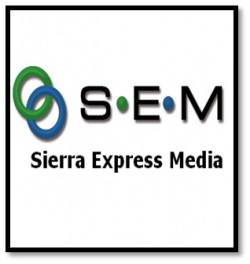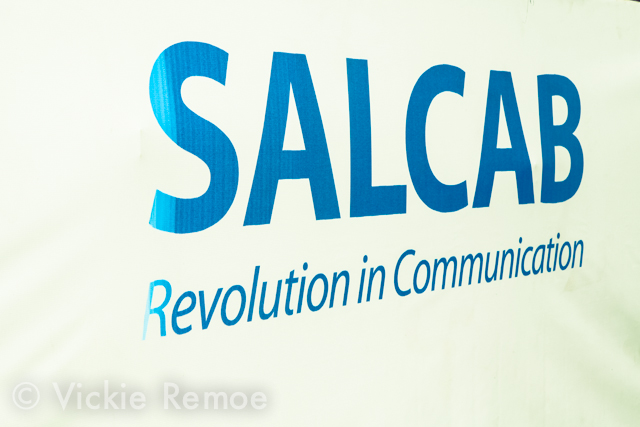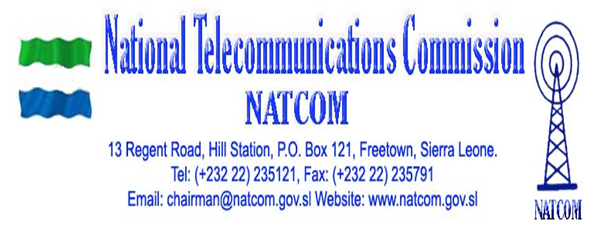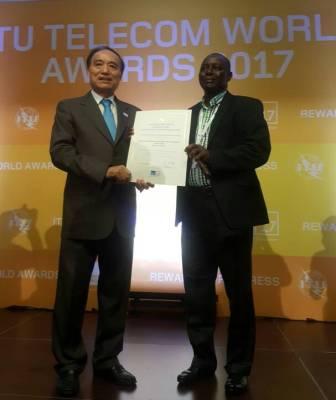Sierra ACE submarine cable project
PUBLIC NOTICE: FINAL CONSULTATION AND DISCLOSURE OF THE ENVIRONEMENTAL AND SOCIAL MANAGEMENT FRAMEWORK AND THE RESETTLEMENT POLICY FRAMEWORK OF THE WEST AFRICA COMMUNICATIONS INFRASTRUCTURE PROGRAM FOR THE AFRICA COAST TO EUROPE SUBMARINE CABLE PROJECT FOR SIERRA LEONE CABLE LIMITED. (Photo: Typical submarine cable system)
Background
There is a wide disparity between ECOWAS countries in terms of availability of telecommunications infrastructure and services besides mobile telephony. The region has huge contrast and heterogeneous development of ICT. The situation is particularly more acute in a number of coastal countries and some landlocked countries that remain unconnected to submarine cable communications. The civil unrest which lasted for 11 years prevented Liberia, Sierra Leone, and Guinea from participating fully in SAT3, MAIN ONE, GLO ONE and other submarine cable infrastructure serving the Atlantic Coast of Africa. Connectivity between Sierra Leone and other countries relies exclusively on expensive satellite communication with limited bandwidth.
On 6th June 2010, Sierra Leone Cable Limited (SALCAB) on behalf of Government of Sierra Leone signed Africa Coast to Europe (ACE) Submarine cable Construction and Maintenance Agreement under the provision of Special Purpose Vehicle (SPV) making SALCAB a full member of the ACE consortium. The ACE submarine cable system will span over 17,000 Km from France to South Africa and will provide access to more than 24 countries starting 2012. With ultimate capacity of wet segment provided under the supply contract of about 1.92 Terabits per second, the ACE system will provide sufficient and redundant capacity for future use. Sierra Leone is part of the West Africa Regional Communications Infrastructure Program (WARCIP) being prepared by World Bank for least connected countries.
Benefits of the WARCIP Project
1. The West Africa Regional Communications Infrastructure Program aims at lowering the cost and improving quality of regional and international connectivity as well as encouraging private sector participation and promoting competition in the management of the International Gateway
2. It will facilitate the connection of all countries in West Africa to global broadband fiber optics infrastructure.
3. It will promote the creation of a coordinated regional and national transmission network which would ensure that all countries in West Africa are able to connect effectively within and between national borders.
4. It will also promote regional stability and harmony as well as national and regional markets
5. It will secure traffic for many countries by creating diversity of existing cable systems
6. It will develop internet and broadband multimedia services and allow for faster and more reliable transmission for data and voice
7. It will reduce rural to urban mitigation, thus creating more jobs as a result of improved trade
8. Economically, it will attract foreign investment, generate new revenue streams from network operators, international expansion of businesses, new network-enabled businesses and enhanced telecom billing systems
9. It will accelerate overall growth of the nation through technology transfer.
10. It will improve educational opportunities through increase in access to information and education resources
The Environmental and Social Management Framework (ESMF) and Resettlement Policy Framework (RPF)
World Bank’s environmental and social safeguards policies require that the recipient country prepare an Environmental and Social Management Framework (ESMF) (consistent with national laws, any applicable treaty concerning international waters, and OP 4.01) and a Resettlement Policy Framework (RPF) for the lateral cables and any associated equipment that will be laid from the Branching Unit of the main cable through territorial waters and onto the national shores. These safeguards documents should be prepared, disclosed and consulted before appraisal.
SAL Consult Limited, a Ghanaian registered multidisciplinary water and environmental consultancy company based in Accra, Ghana was contracted to prepare the ESMF and the RPF for the Project. The RPF component of the ESMF has been prepared as a separate stand-alone document to provide guidance in the event that land needs to be acquired and people need to be resettled or compensated.
Two (2) sites have been proposed for the cable landing station. The two areas include the land adjacent to the Atlantic Restaurant and the Juba Barracks site. The approximate coordinate of the land adjacent to the Atlantic Restaurant is 8°27.551’N and 13°16.711’W and is bounded by a perimeter fence wall and a revetment. The land currently has no permanent structures except for a movable metal container being used by four (4) caretakers at the site. There is a State Land sign post which suggests that the piece of land belongs to the State but apparently the land ownership is also being claimed by a Lebanese investor. The land is situated along the proposed ring road at Lumley Beach. The proposed Juba Barracks Area is the current premises of the Juba Military Barracks. The approximate coordinate of this land is 8°27.316’N and 13°16.750’W. There are residential, vocational school buildings, and the make shift structures.
Purpose of the ESMF
The purpose of the framework is:
- to provide as much information as possible about environmental and social impacts (including possible land acquisition and resettlement) at the project’s current state of preparation;
- to inform the project planning and design process by comparing the potential impacts of alternative locations, configurations, and construction techniques that are under consideration and
- to describe the procedures for subsequent assessment of impacts and development of the appropriate impact management instruments when the details of the project become available
Purpose of the RPF
The preparation of the RPF is a requirement for projects that may entail involuntary resettlement, issues of compensation, acquisition of land, impact on livelihood, or restricted access to natural resources under the World Bank safeguard policy on Involuntary Resettlement. Thus, in meeting this World Bank requirement, the RPF provides guidance to project stakeholders to adequately address all resettlement related challenges.
Selection criteria for consideration for proposed landing stations
Cable landing stations are usually carefully chosen to be in areas:
1. that have little marine traffic to minimize the risk of cables being damaged by ship anchors and trawler operations;
2. with gently sloping, sandy or silty sea-floors so that the cable can be buried to minimize the chance of damage; and
3. without strong currents that would uncover buried cables and potentially move cables.
In addition to the above environmental issues, social issues and cost can also influence site selection
Key stakeholders of the project
The key stakeholders of the project include Ministry of Information and Communication, Ministry of Lands and the Environment, Ministry of Fisheries and Marine Resources, Ministry of Transport and Aviation, Ministry of Tourism and Culture, Ministry of Defense, Sierra Leone Cable Limited (SALCAB), National Telecommunications Commission, Sierra Leone Environmental Protection Agency (SLEPA), Maritime Administration, Freetown City Council, Telecommunications operators, people affected by the project and Non-Governmental Organizations (NGOs).
Final consultations and Disclosure of ESMF and RPF
SAL Consult Limited has prepared a draft Environmental and Social Management Framework ( ESMF) and a Resettlement Policy Framework (RPF) on behalf of SALCAB for the lateral cables and any associated equipment that will be laid from the Branching Unit to the main cable through territorial waters and onto the national shores.
The Ministry of Information and Communication through SALCAB will now carryout final consultations activities with stakeholders such as relevant and interested Government agencies, local governments, non-governmental organizations, and civil society.
SALCAB has appointed a Liaison Officer to manage the final consultations with stakeholders, collate and consolidate their comments. SAL Consult Limited has already provided electronic and hard copies of the ESMF and the RPF for consultations and subsequent disclosure.
The World Bank policies require that environmental reports for projects are made available to project affected groups, local NGOs, and the public at large. However, there is no limitation as to the extent and scope of disclosure. Copies of the draft ESMF & RPF will be available at selected public places such as libraries (FBC, NUC, IPAM, MMCET, Freetown City Council, Western Rural District Council Parliament, law court & FTC) ,project-affected area and as required by law for information and comments from 10th November 2010 for period of five (5) days.
The public is advised to channel all concerns about the ESMF and RPF to Sierra Leone Cable Limited office situated at the 6th Floor of the Sierra Leone Commercial Bank Building at 35A Lightfoot Boston Street (at the junction of Liverpool Street and Lightfoot Boston Street) and Ministry of Information and Communication 8th Floor Youyi Building, Freetown on or before 15th November 2010.
SAL consult Limited will incorporate any comments and any revision necessary from the World Bank and other stakeholders in the draft ESMF and RPF prior to submission to the Government of Sierra Leone and the Bank for final publications.
Ministry of Information & Communications, Freetown
Stay with Sierra Express Media, for your trusted place in news!
PUBLIC NOTICE
FINAL CONSULTATION AND DISCLOSURE OF THE ENVIRONEMENTAL AND SOCIAL MANAGEMENT FRAMEWORK AND THE RESETTLEMENT POLICY FRAMEWORK OF THE WEST AFRICA COMMUNICATIONS INFRASTRUCTURE PROGRAM FOR THE AFRICA COAST TO EUROPE SUBMARINE CABLE PROJECT FOR SIERRA LEONE CABLE LIMITED.
Background
There is a wide disparity between ECOWAS countries in terms of availability of telecommunications infrastructure and services besides mobile telephony. The region has huge contrast and heterogeneous development of ICT. The situation is particularly more acute in a number of coastal countries and some landlocked countries that remain unconnected to submarine cable communications. The civil unrest which lasted for 11 years prevented Liberia, Sierra Leone, and Guinea from participating fully in SAT3, MAIN ONE, GLO ONE and other submarine cable infrastructure serving the Atlantic Coast of Africa. Connectivity between Sierra Leone and other countries relies exclusively on expensive satellite communication with limited bandwidth.
On 6th June 2010, Sierra Leone Cable Limited (SALCAB) on behalf of Government of Sierra Leone signed Africa Coast to Europe (ACE) Submarine cable Construction and Maintenance Agreement under the provision of Special Purpose Vehicle (SPV) making SALCAB a full member of the ACE consortium. The ACE submarine cable system will span over 17,000 Km from France to South Africa and will provide access to more than 24 countries starting 2012. With ultimate capacity of wet segment provided under the supply contract of about 1.92 Terabits per second, the ACE system will provide sufficient and redundant capacity for future use. Sierra Leone is part of the West Africa Regional Communications Infrastructure Program (WARCIP) being prepared by World Bank for least connected countries.
Benefits of the WARCIP Project
1. The West Africa Regional Communications Infrastructure Program aims at lowering the cost and improving quality of regional and international connectivity as well as encouraging private sector participation and promoting competition in the management of the International Gateway
2. It will facilitate the connection of all countries in West Africa to global broadband fiber optics infrastructure.
3. It will promote the creation of a coordinated regional and national transmission network which would ensure that all countries in West Africa are able to connect effectively within and between national borders.
4. It will also promote regional stability and harmony as well as national and regional markets
5. It will secure traffic for many countries by creating diversity of existing cable systems
6. It will develop internet and broadband multimedia services and allow for faster and more reliable transmission for data and voice
7. It will reduce rural to urban mitigation, thus creating more jobs as a result of improved trade
8. Economically, it will attract foreign investment, generate new revenue streams from network operators, international expansion of businesses, new network-enabled businesses and enhanced telecom billing systems
9. It will accelerate overall growth of the nation through technology transfer.
10. It will improve educational opportunities through increase in access to information and education resources
The Environmental and Social Management Framework (ESMF) and Resettlement Policy Framework (RPF)
World Bank’s environmental and social safeguards policies require that the recipient country prepare an Environmental and Social Management Framework (ESMF) (consistent with national laws, any applicable treaty concerning international waters, and OP 4.01) and a Resettlement Policy Framework (RPF) for the lateral cables and any associated equipment that will be laid from the Branching Unit of the main cable through territorial waters and onto the national shores. These safeguards documents should be prepared, disclosed and consulted before appraisal.
SAL Consult Limited, a Ghanaian registered multidisciplinary water and environmental consultancy company based in Accra, Ghana was contracted to prepare the ESMF and the RPF for the Project. The RPF component of the ESMF has been prepared as a separate stand-alone document to provide guidance in the event that land needs to be acquired and people need to be resettled or compensated.
Two (2) sites have been proposed for the cable landing station. The two areas include the land adjacent to the Atlantic Restaurant and the Juba Barracks site. The approximate coordinate of the land adjacent to the Atlantic Restaurant is 8°27.551’N and 13°16.711’W and is bounded by a perimeter fence wall and a revetment. The land currently has no permanent structures except for a movable metal container being used by four (4) caretakers at the site. There is a State Land sign post which suggests that the piece of land belongs to the State but apparently the land ownership is also being claimed by a Lebanese investor. The land is situated along the proposed ring road at Lumley Beach. The proposed Juba Barracks Area is the current premises of the Juba Military Barracks. The approximate coordinate of this land is 8°27.316’N and 13°16.750’W. There are residential, vocational school buildings, and the make shift structures.
Purpose of the ESMF
The purpose of the framework is:
1. to provide as much information as possible about environmental and social impacts (including possible land acquisition and resettlement) at the project’s current state of preparation;
2. to inform the project planning and design process by comparing the potential impacts of alternative locations, configurations, and construction techniques that are under consideration and
3. to describe the procedures for subsequent assessment of impacts and development of the appropriate impact management instruments when the details of the project become available
Purpose of the RPF
The preparation of the RPF is a requirement for projects that may entail involuntary resettlement, issues of compensation, acquisition of land, impact on livelihood, or restricted access to natural resources under the World Bank safeguard policy on Involuntary Resettlement. Thus, in meeting this World Bank requirement, the RPF provides guidance to project stakeholders to adequately address all resettlement related challenges.
Selection criteria for consideration for proposed landing stations
Cable landing stations are usually carefully chosen to be in areas:
1. that have little marine traffic to minimize the risk of cables being damaged by ship anchors and trawler operations;
2. with gently sloping, sandy or silty sea-floors so that the cable can be buried to minimize the chance of damage; and
3. without strong currents that would uncover buried cables and potentially move cables.
In addition to the above environmental issues, social issues and cost can also influence site selection
Key stakeholders of the project
The key stakeholders of the project include Ministry of Information and Communication, Ministry of Lands and the Environment, Ministry of Fisheries and Marine Resources, Ministry of Transport and Aviation, Ministry of Tourism and Culture, Ministry of Defense, Sierra Leone Cable Limited (SALCAB), National Telecommunications Commission, Sierra Leone Environmental Protection Agency (SLEPA), Maritime Administration, Freetown City Council, Telecommunications operators, people affected by the project and Non-Governmental Organizations (NGOs).
Final consultations and Disclosure of ESMF and RPF
SAL Consult Limited has prepared a draft Environmental and Social Management Framework ( ESMF) and a Resettlement Policy Framework (RPF) on behalf of SALCAB for the lateral cables and any associated equipment that will be laid from the Branching Unit to the main cable through territorial waters and onto the national shores.
The Ministry of Information and Communication through SALCAB will now carryout final consultations activities with stakeholders such as relevant and interested Government agencies, local governments, non-governmental organizations, and civil society.
SALCAB has appointed a Liaison Officer to manage the final consultations with stakeholders, collate and consolidate their comments. SAL Consult Limited has already provided electronic and hard copies of the ESMF and the RPF for consultations and subsequent disclosure.
The World Bank policies require that environmental reports for projects are made available to project affected groups, local NGOs, and the public at large. However, there is no limitation as to the extent and scope of disclosure. Copies of the draft ESMF & RPF will be available at selected public places such as libraries (FBC, NUC, IPAM, MMCET, Freetown City Council, Western Rural District Council Parliament, law court & FTC) ,project-affected area and as required by law for information and comments from 10th November 2010 for period of five (5) days.
The public is advised to channel all concerns about the ESMF and RPF to Sierra Leone Cable Limited office situated at the 6th Floor of the Sierra Leone Commercial Bank Building at 35A Lightfoot Boston Street (at the junction of Liverpool Street and Lightfoot Boston Street) and Ministry of Information and Communication 8th Floor Youyi Building, Freetown on or before 15th November 2010.
SAL consult Limited will incorporate any comments and any revision necessary from the World Bank and other stakeholders in the draft ESMF and RPF prior to submission to the Government of Sierra Leone and the Bank for final publications.
Stay with Sierra Express Media, for your trusted place in news!
© 2010, https:. All rights reserved.






